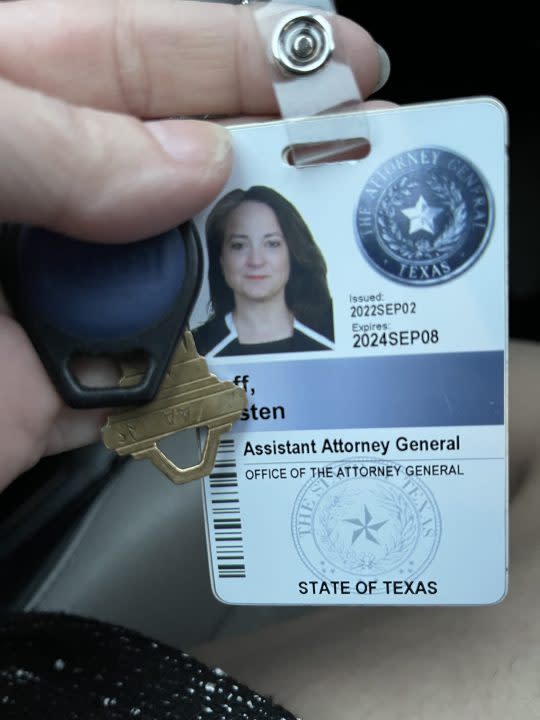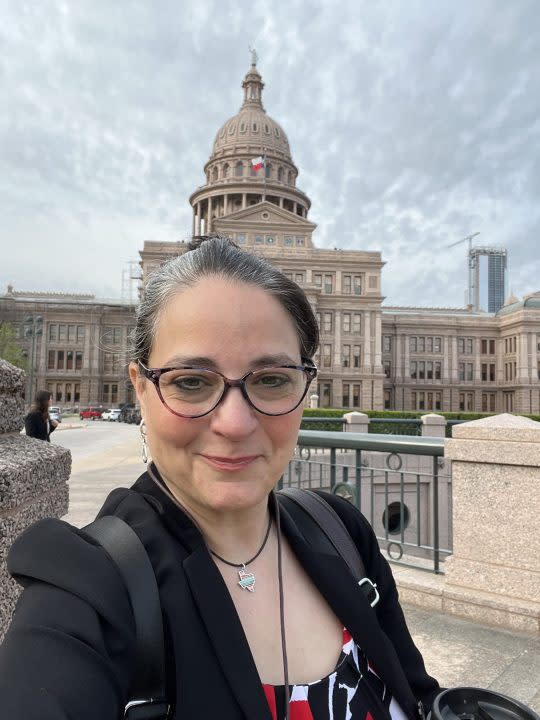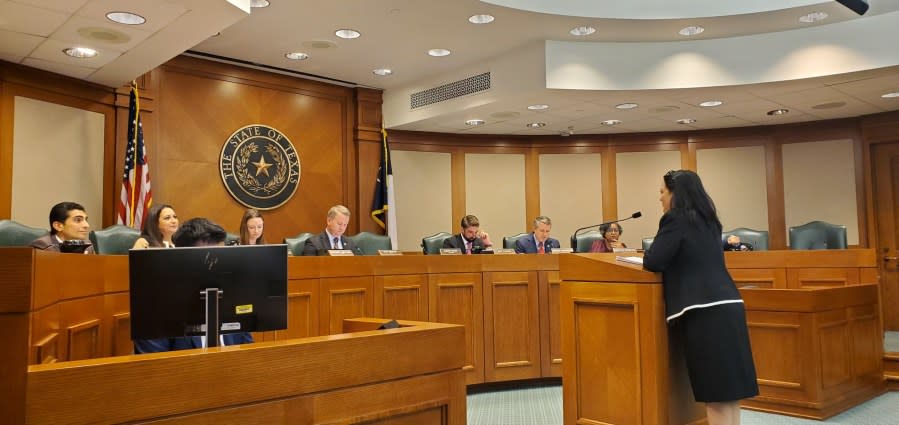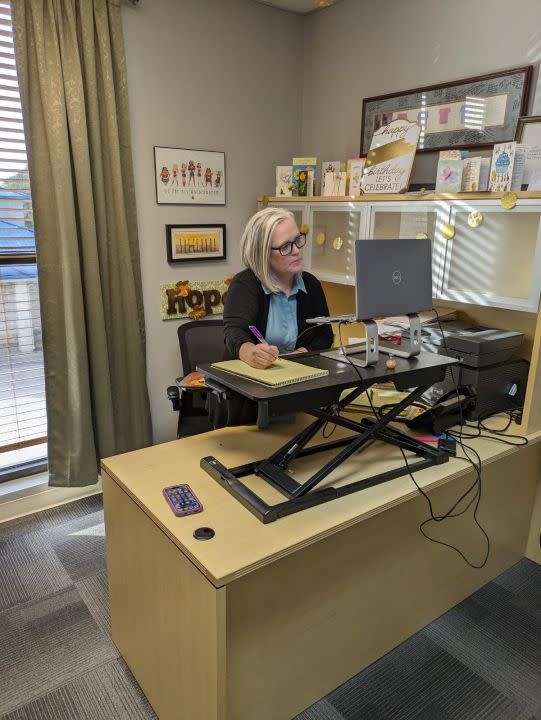Former AG official: skewed math obscures Texas victim compensation delays

AUSTIN (KXAN) – For more than a year, KXAN has investigated the Texas Attorney General’s Crime Victims’ Compensation program and its impact on victims and family members seeking help in the wake of violent crime.
Thousands of survivors are still waiting months for assistance, KXAN revealed.
Hit by stolen car, victim waits months for state assistance. He’s not alone.
Victims like Steven Heller – who was hit and thrown from his bicycle in Pflugerville by a car driving away from police on New Year’s Day – say the process has been frustrating. Six months after he was deemed eligible for money, Heller was still waiting for assistance, according to records he showed KXAN. In that time, the suspect in Heller’s case, who was a convicted felon in a stolen car, pleaded guilty to two felonies and was sent to prison, according to court records.
Others, like Patricia Bourdon and Dana Ewing – both survivors of domestic assaults – have described the CVC process as anger inducing and “retraumatizing.”
The program is available for victims of violent crimes, including assault, rape, shootings, kidnappings and drunk driving. The pool of money comes not from tax dollars but mostly from court fees and federal grants. It is used to reimburse medical bills, therapy, relocation, bereavement, lost wages and more. All other forms of compensation, like insurance and worker’s compensation, must be used before CVC assistance.
In recent years, it has been tough to get those benefits. Texas’ CVC division has been plagued with staffing shortages and turnover. Since July 2021, the average time for victims to get their first payment remained over 100 days and ballooned to 192 days in July 2023, the latest month of records obtained by KXAN.
And those aren’t the only issues that need to be addressed, one expert said.
Former AG official: Target met with skewed math
In an exclusive interview with KXAN, Kristen Huff, a former top attorney in the CVC division, said there is another problem that should be confronted. For years, the program has submitted performance data to the state legislature that could be misleading — to lawmakers, crime victims and advocates — obscuring how long victims are actually waiting for help the state promised.

Huff – a former assistant attorney general and deputy chief of Crime Victim Services who resigned in April citing burnout – said the program is meeting its goal, on paper, using a formula that doesn’t reflect reality.
She referenced mandated efficiency reports created by the program showing the CVC division successfully analyzed and awarded claims within its “target” of 46 days or fewer, on average, in nearly every fiscal quarter since January 2019. The average was listed at, or below, 40 days in most quarters. Those numbers were submitted in budget documents to the legislature and Legislative Budget Board, a permanent joint committee of the state legislature that collects and analyzes agency budgets and performance.

“This false idea that victims are actually getting that payment in that much time, that is not true,” Huff said. “Victims are getting payments much longer than the average days to payment.”
That’s because the Office of Attorney General is combining two different types of claims to come up with its overall average. The first are claims submitted directly by crime victims. The other type are sexual assault exam claims submitted directly by hospitals or medical providers, without survivors being involved, according to Huff and internal records obtained by KXAN.
There’s a critical difference between the two.
Rape kit testing claims vs. victim claims
Medical facilities, not victims, handle sexual assault exam exam claims. Victims are not involved in that reimbursement process, and medical providers are compensated quickly in about a week, or less, according to Huff and program data obtained by KXAN.
EXPLORE: KXAN investigates the Texas Crime Victims’ Compensation program
All other victim claims – like emergency room bills, funeral costs, lost wages, relocation, therapy, bereavement and more – are handled by the victims themselves and typically involve an extensive application and approval process. For a victim to get a first payment, it often takes months – like in Heller’s case.
The rape kit claims pull the overall average down to roughly 40 days, or fewer, in the last year, according to Huff and the program data. Victims of crimes trying to get help don’t see that level of efficiency, Huff said.

KXAN explained the program’s performance measurements to Heller. He was doubtful the average victim gets paid in about 40 days.
“I’d be surprised,” said Heller. “Because that’s definitely not the experience I’ve been having.”
The formula used by the state to report its performance has existed for many years. It used to be more accurate, before changes in the law streamlined payments for sexual assault exams, Huff said. Now, the average used by the program is mixing “apples and oranges” together as “just fruit,” she said, describing it as “not a fair comparison.”
“To this day, most people do not understand why those numbers are combined,” Huff said. “It’s just never been separated out.”
‘Disservice’
KXAN brought the issue to Donna Bloom, director of legal services for Denton County Friends of the Family, a domestic violence and rape crisis center north of Dallas.
Bloom’s nonprofit assists survivors in getting reimbursements from the state, giving her a broad, multi-year view of the CVC program’s performance.

Victims being reimbursed in about 40 days is “absolutely not” what her organization’s applicants are currently seeing, she said in mid-November.
“I think it’s a disservice to victims in the state of Texas to not be transparent about the difference,” Bloom said. “We haven’t experienced anything like (an average of 40 days) since probably 2018, or 2019.”
Bloom’s nonprofit has heard directly from case managers at the Office of Attorney General who said there is a “three to four-month wait for an eligibility decision” for victims, she said. And an eligibility decision isn’t even the final step before an award is made, she added.
Bloom acknowledged she has never seen the performance metrics CVC submits to the state. If she had, she would have been puzzled.
“If I went to that metric, and saw that they were meeting their benchmark, it would confuse me,” Bloom said. “I might then say, ‘Well, what are we doing wrong? What do we need to fix?’ Because our applications are definitely not being paid out at 42 days.”
“Over time with these waits, they just… they lose faith,” Bloom said. “They lose faith in the system, and they see us as an extension of that system. So, they lose faith in us.”
Terra Tucker is the Texas state director for Alliance for Safety and Justice, a nonprofit that helps victims of violent crime, including accessing the CVC program. She, too, has heard from survivors struggling to get through the application process.
“A few of our survivors who have active cases have said that there have been wait periods, and it’s been hard for them to get their reimbursements,” Tucker said. “It’s been hard for them to get, you know, a hold of people, at times.”
Those delays can hinder healing, she said.
Expanding benefits
Tucker has advocated for improvements to victim services. In October 2022, she testified before the House Criminal Jurisprudence Committee, which had an interim charge to study the availability of victim assistance.
Tucker told lawmakers she was in favor of expanding benefits and reducing certain restrictions on crime victims’ compensation, among other items. Huff testified at the same hearing on behalf of the Office of Attorney General and said her office also recommended expanding benefits. Those proposals were passed into law through Senate Bill 49, which took effect Sept. 1.
Looking back, Huff told KXAN she wishes she said more about the problems in her division.
“I would have told them that the program was in desperate crisis and that they needed to address the root of the problem,” Huff said. “I would have said we need to focus on getting the work done on getting the employee and employment pool stable. I would have told them it wasn’t the right time to maybe expand into other areas.”
“I was not able to speak freely,” she added.
The CVC office’s struggles are visible in the program’s bottom line: Less money is being paid.
The division had a target of awarding more than $76 million but paid out less than $59 million – a shortfall of nearly 25%, according to budget records obtained by KXAN.
That is a “measurable failure,” Huff said.
The Office of Attorney General said the shortfall was “primarily due to persistent staffing shortages and loss of key management,” according to an explanation submitted to the Legislative Budget Board.
EXPLORE: Held Up: Crime victim waiting for state money
The Attorney General’s Office did not respond to multiple requests for comment by KXAN, including a half dozen emails sent over two weeks and messages left to the press office voicemail. After not getting a response, KXAN investigator Matt Grant visited the state office building during regular business hours, on camera, to hand over our questions in person to a press office worker. He could not reach anyone to speak with or let him upstairs from the lobby.
Grant left our questions at an empty security guard desk. He then called and left a message, again, with the press office.
We never heard back.
However, in response to questions sent by KXAN over the summer for a different report on the CVC program, the Office of Attorney General told us that “CVSD [Crime Victim Services Division] is nearly fully staffed after the OAG worked alongside the legislature to address recruiting and retention difficulties that state agencies have faced in recent years, resulting in an across-the-board pay raise for all state employees.”
“While the coronavirus pandemic was severely disruptive to normal operations for agencies statewide,” according to a spokesperson, “CVSD has worked tirelessly to provide attentive, high-quality service”
The crises at the Attorney General’s office extended beyond the CVC division. The agency lost continuity of leadership this year. Attorney General Ken Paxton was impeached and suspended from his job in May. Gov. Greg Abbott then appointed two interim attorneys general to helm the office before Paxton was acquitted and returned to his post in September.
Paxton still faces pending felony securities fraud charges, and a trial is expected next year. Paxton was also sued by several former top lieutenants who claimed they were wrongfully retaliated against and terminated after reporting Paxton to law enforcement. That lawsuit also remains pending.
It is unclear if this had an impact on victim services.
‘Still suffering’
Huff said she hopes exposing deficiencies in the program will help crime victims – and employees in the division who also feel the brunt.
“I have a lot of good friends that are still there,” said Huff. “And they’re still suffering.”
Despite the risk to her career, Huff said she felt compelled to speak publicly.
“For lawyers to speak out against a former employer, especially if that one is an elected official, is pretty much career suicide,” Huff said. “There’s a huge risk and liability associated to your reputation when you speak out.”
Nevertheless, Huff spoke up.
“I always felt that it was my highest calling to deliver bad news with rigorous honesty but the utmost empathy. That’s how you do victim services because you can never make it right. We can never give you enough money; you deserve everything,” Huff said. “That’s what it looks like to try to serve someone in the unimaginable outcome of violence. You do your best to meet them where they are, to serve the needs you can, and to help them in that process along the way. It is a long-term commitment when you help a victim of violence.”
Photojournalist Jordan Belt, Investigative Photojournalist Richard Bowes, Graphic Artist Wendy Gonzalez, Director of Investigations & Innovation Josh Hinkle and Graphic Artist Christina Staggs contributed to this report.
For the latest news, weather, sports, and streaming video, head to KXAN Austin.

